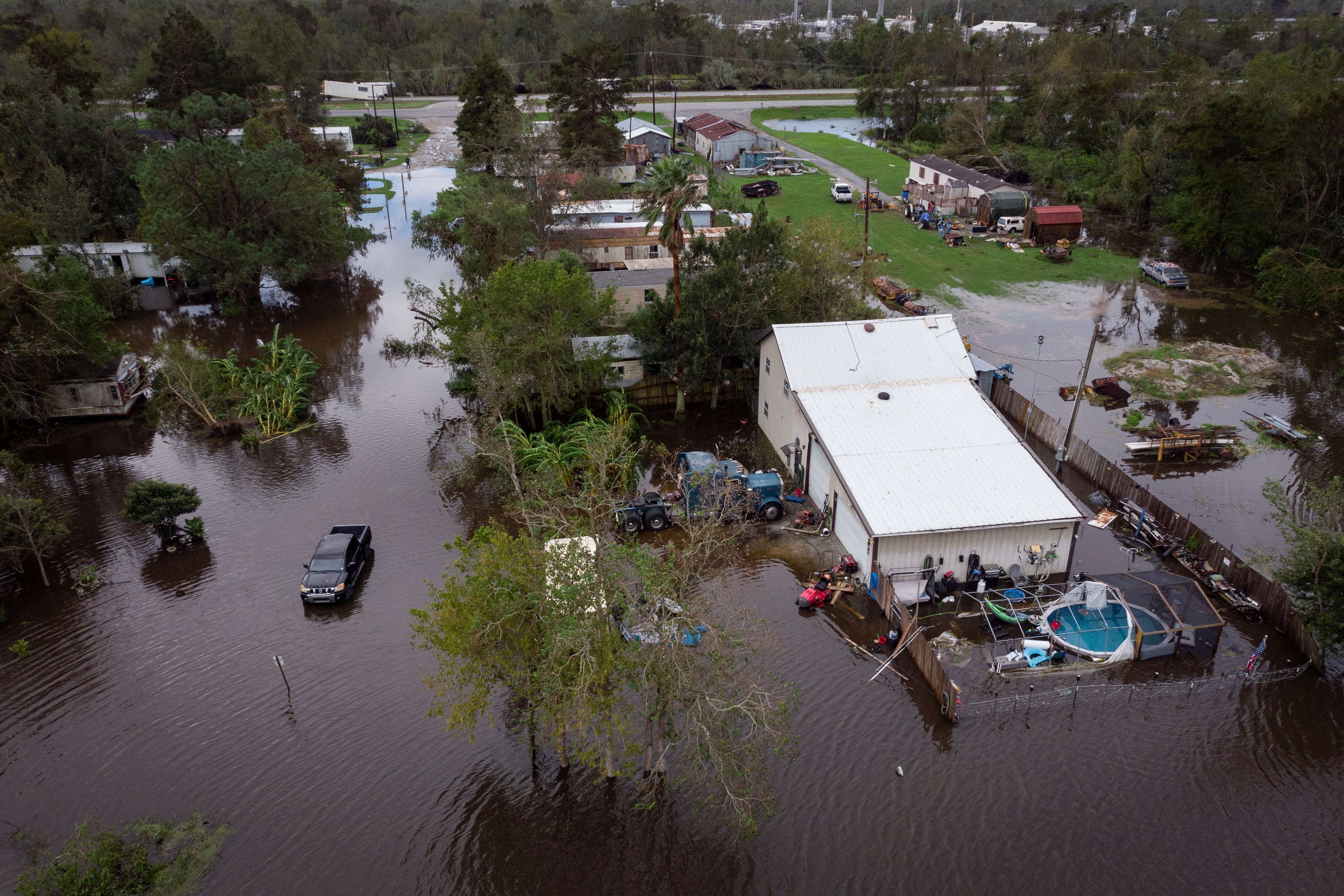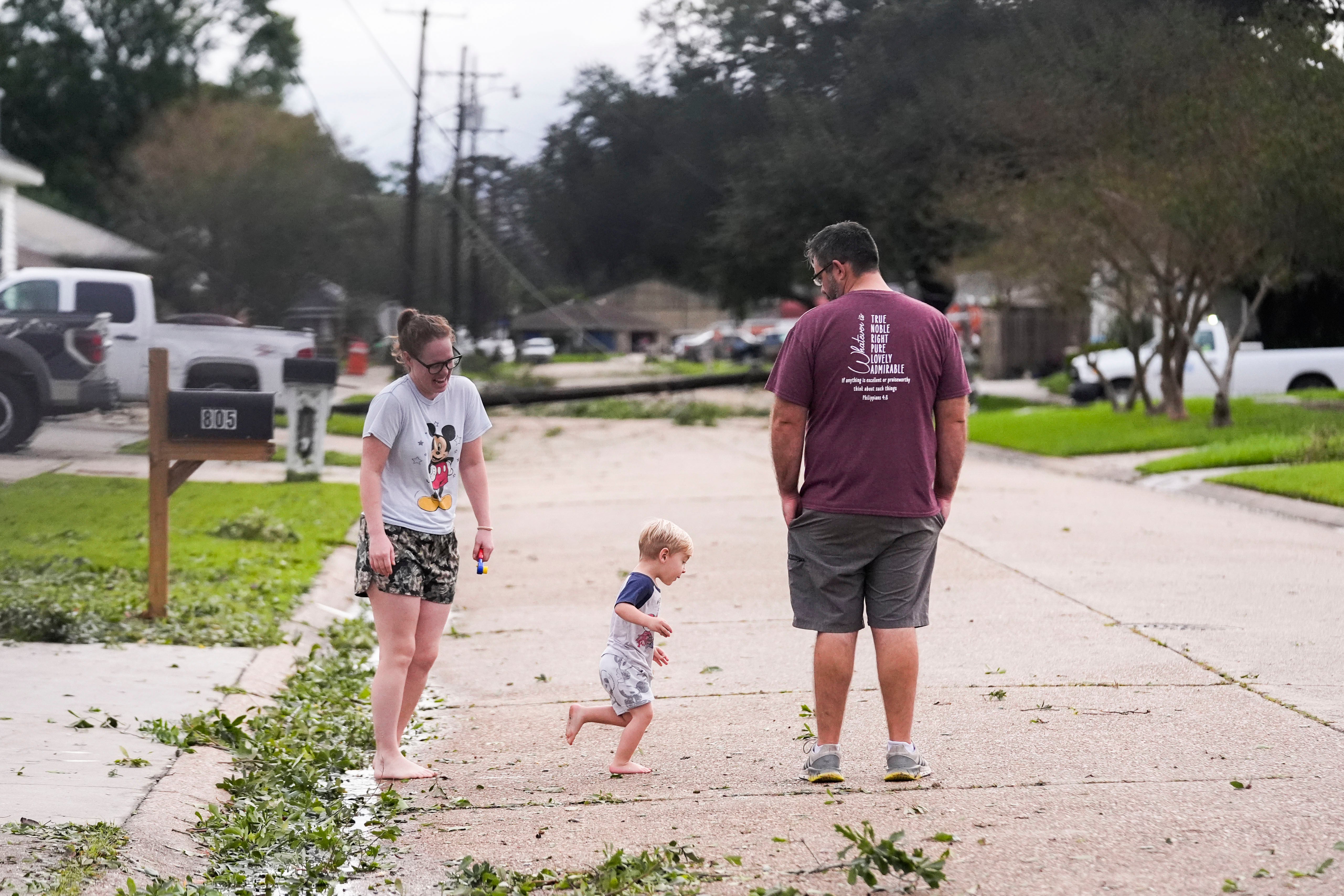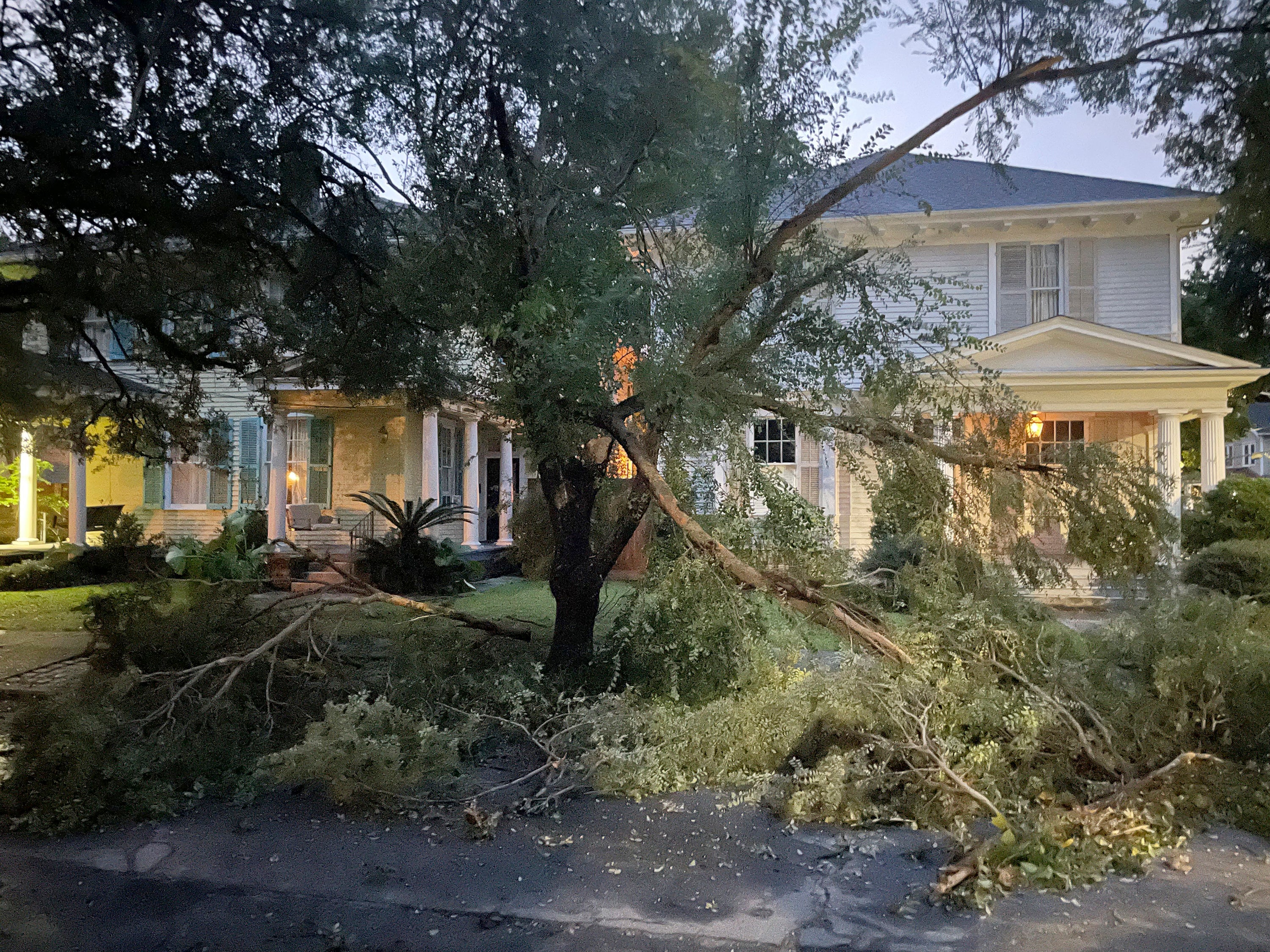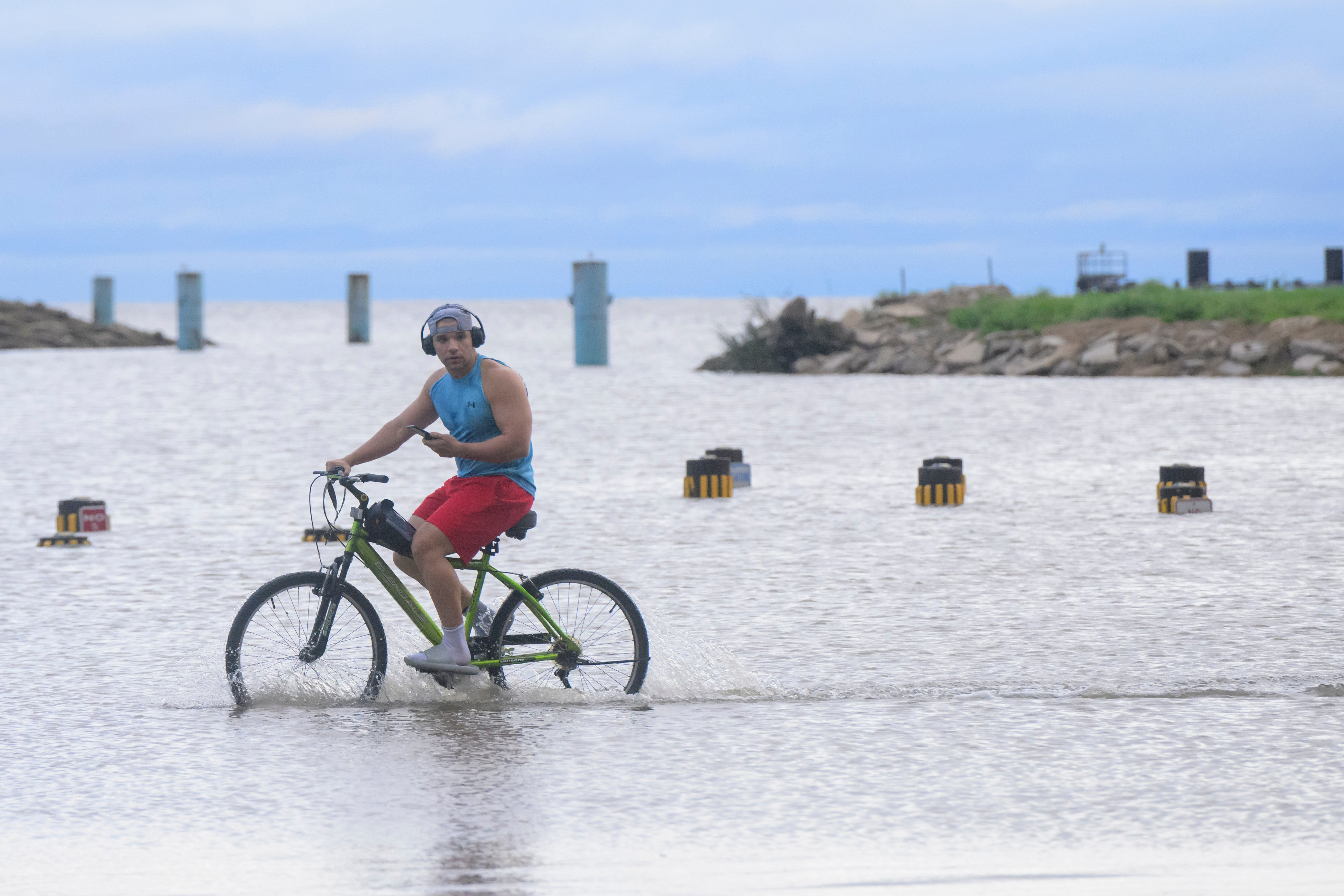Storm Francine weakens to a tropical depression but threatens South with more flooding and tornadoes
Tornado warnings were issued for large parts of Florida and Alabama
Threats from Storm Francine continued across much of the South on Thursday even as the storm weakened into a tropical depression, after bringing 100mph winds and more than nine inches of rain to parts of Louisiana.
Residents were told to immediately seek shelter from possible spinoff tornadoes, as warnings and watches were issued in Alabama and Florida. Some were also possible in Georgia.
The threat of heavy rain continued. Some 4-8 inches of rain are expected across portions of Mississippi, eastern Arkansas, Tennessee, Alabama, Georgia, and the Florida Panhandle. Up to a foot of flooding is possible in Alabama, the Florida Panhandle, and Georgia.
That rain also brought the risk of considerable flash and urban flooding for portions of the Florida Panhandle and Alabama later on Thursday. That threat would expand across Georgia and into middle Tennessee on Friday.
Flash, urban, and river flooding is also still possible for the Lower Mississippi Valley, the Tennessee Valley, and the Southeast.

Francine is expected to become a post-tropical cyclone later Thursday. The storm’s center is tracking to move over central and northern Mississippi Thursday afternoon and into northeastern Arkansas by Friday.
While hazards from the storm have not ended, Gulf Coast states already were picking up the pieces.
More than 410,000 customers remained without power in Louisiana, Mississippi, and Alabama on Thursday, as the system shifted inland over central Mississippi. Uility Entergy said it was working to restore power and safety and quickly as possible in Louisiana.

There were no immediate reports of deaths or injuries from the storm, but residents were advised to remain cautious.
On the road, they were asked to treat all intersections as four-way stops, if traffic lights were out, and to report any damage to Governor Jeff Landry’s Office of Homeland Security and Emergency Preparedness. The National Guard will visit affected parishes in Louisiana with food and water, as well as a fleet of emergency vehicles.
In a news conference on Thursday, Landry said there had been a very large amount of rainfall in the New Orleans metropolitan area. There were more than eight inches reported in the areas, according to Fox 8.
“We saw an unexpected contingency that we had to deal with last night,” he told reporters.

Power, he said, was being restored. But, to do so, he asked the majority of residents to stay off the roads.
In New Orleans, which saw substantial flooding and related damage, some city services were resuming. Trash and recycling would be collected after operations paused on Wednesday and the New Orleans Regional Transit Authority returned with limited bus service.
Still multiple schools in the New Orleans area remained closed, and more than a couple dozen flights at Louis Armstrong New Orleans International Airport were cancelled on Thursday. The airport reportedly saw wind gusts up to 78 miles per hour.

While debris and tree branches covered Louisiana streets, Jefferson Parish Mayor Cynthia Lee Sheng said that water levels were receding there. But, canal levels are still high and streets have remained flooded. Pumps in the parish could not keep up with the storm, causing sewer problems.
Francine was the sixth named storm of the Atlantic hurricane season. Many areas of the state were still recovering from Category 4 Hurricane Ida in August 2021.
With reporting from The Associated Press
The Independent will be revealing its Climate100 List in September and hosting an event in New York, which can be attended online.
Join our commenting forum
Join thought-provoking conversations, follow other Independent readers and see their replies
Comments
Bookmark popover
Removed from bookmarks